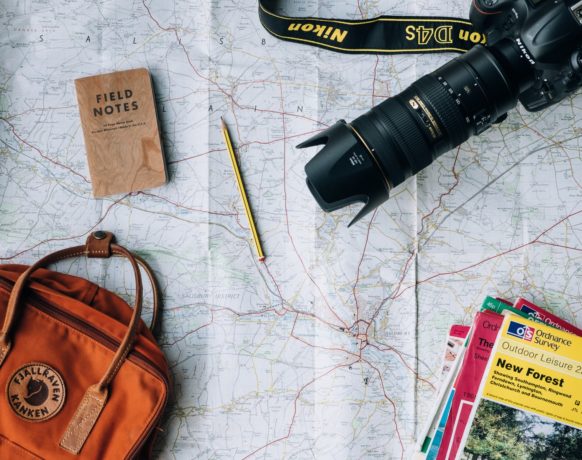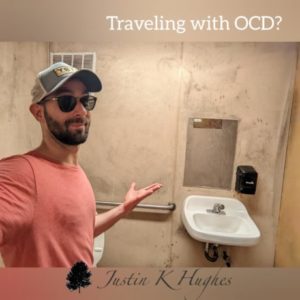
OCD and Anxiety are difficult foes when it comes to change. Part of the problem with these disorders is that those who are not yet in recovery have developed often elaborate systems to prevent and escape from their distress. While this may provide immediate relief momentarily, it serves to reinforce that we might only be safe because we avoided the thing or did it a certain way.
Traveling Can Be Challenging
Traveling brings challenges for the average person. Add on the additional factors of a disorder- let’s just say that it easily can become a struggle. But with every challenge comes opportunity.

Here is me recently when I was traveling. I was with family playing at a park. I needed to use the bathroom. 3 options:
- Use the woods without sufficient covering (e.g., get arrested)- I absolutely was not going to do that.
- Drive away, miss out on family, but find a “clean” restroom.
- Use the outhouse-type structure and get on with my day.
I chose #3. I also don’t have OCD or contamination obsessions, though it was uncomfortable; I chose what was the great priority to me in the moment. My heart went out to my many clients where this would have been a nightmare experience.
What the Wisdom of Treatment Tells Us To Do
If a person is to live free of being controlled by fear, anxiety, or obsessions, they will have to learn to face those fears. None of us does this overnight, just like Ruby.* She came into treatment stuck- but she believed there might be a way forward. She would go hours without using the bathroom in public, sometimes waiting up to 10 hours if she had to endure the work day so she didn’t have to go to the restroom. These behaviors begin to take a toll not just psychologically, but bodily as well. Her doctor did not like what he was seeing in her labs due to years of vigilant behaviors and avoidance of using the bathroom. Dehydration was the smallest of those concerns. However, Ruby was the first person who hated that she did this, but she felt compelled due to the intensity and severity of her obsessions.
We worked small to begin, but big enough to give her a taste of success. After her first successful exposure, something turned on like a light switch. She felt anxious; she didn’t compulse. It started with walking inside an immaculate public bathroom and not washing, at first the door was held for her. When she did it 50 more times in the course of the next few months- with variations- without washing, she was ready to move further- to start using the public bathroom away from home. She still felt anxious, but she wasn’t controlled by it (eventually she felt quite a bit less).
2 Simple Tips
Treatment is almost never hard to understand in its simple form for these things. Do the thing. Don’t compulse. Remind yourself of what matters, what you value.
Easier said than done. It takes practice. So when a client recently asked me in the last 3 minutes of our session what quick tips I might have for traveling, I said basically this:
1) Be realistic with where you are. Walk into your trip identifying what you can do, what you can’t do right now, and what you might be able to challenge yourself in. Stay open to surprising yourself, though!
2) Hold the line with the things you can do, and find each day opportunities to push yourself a little further. Go kindly.
My best wishes to you if you are traveling. If it’s a struggle and you avoid it altogether, know there is a way forward. Proud of you, Ruby.
~Justin
*Name and some details changed for the protection of privacy, using a composite of information.








Leave a Reply